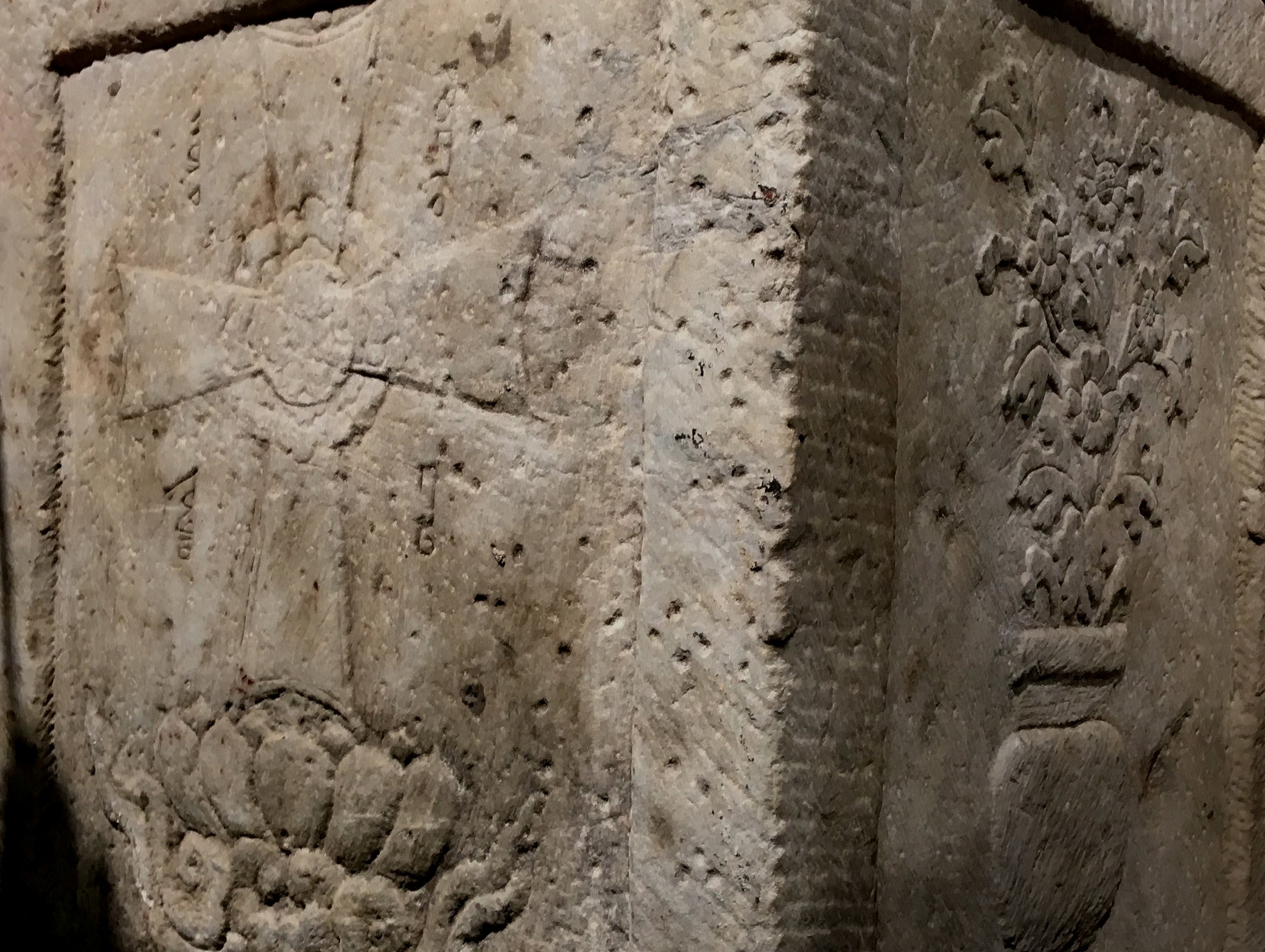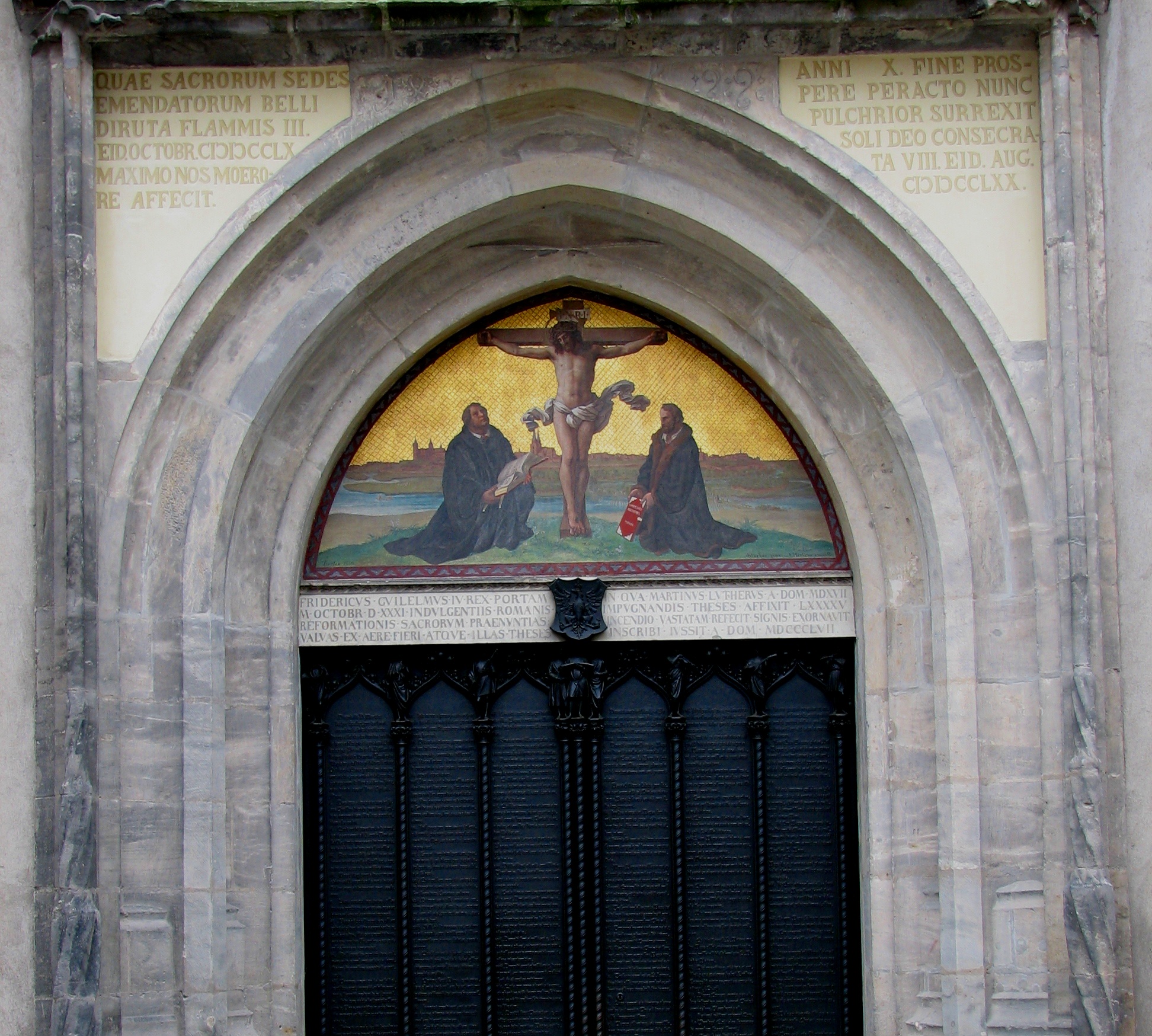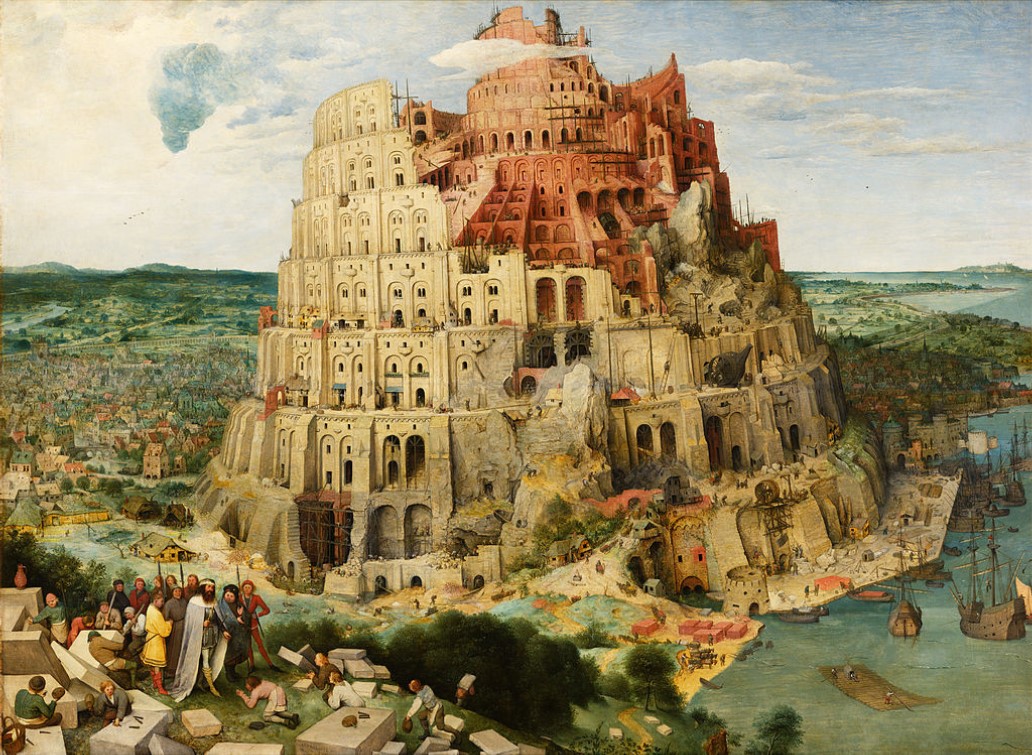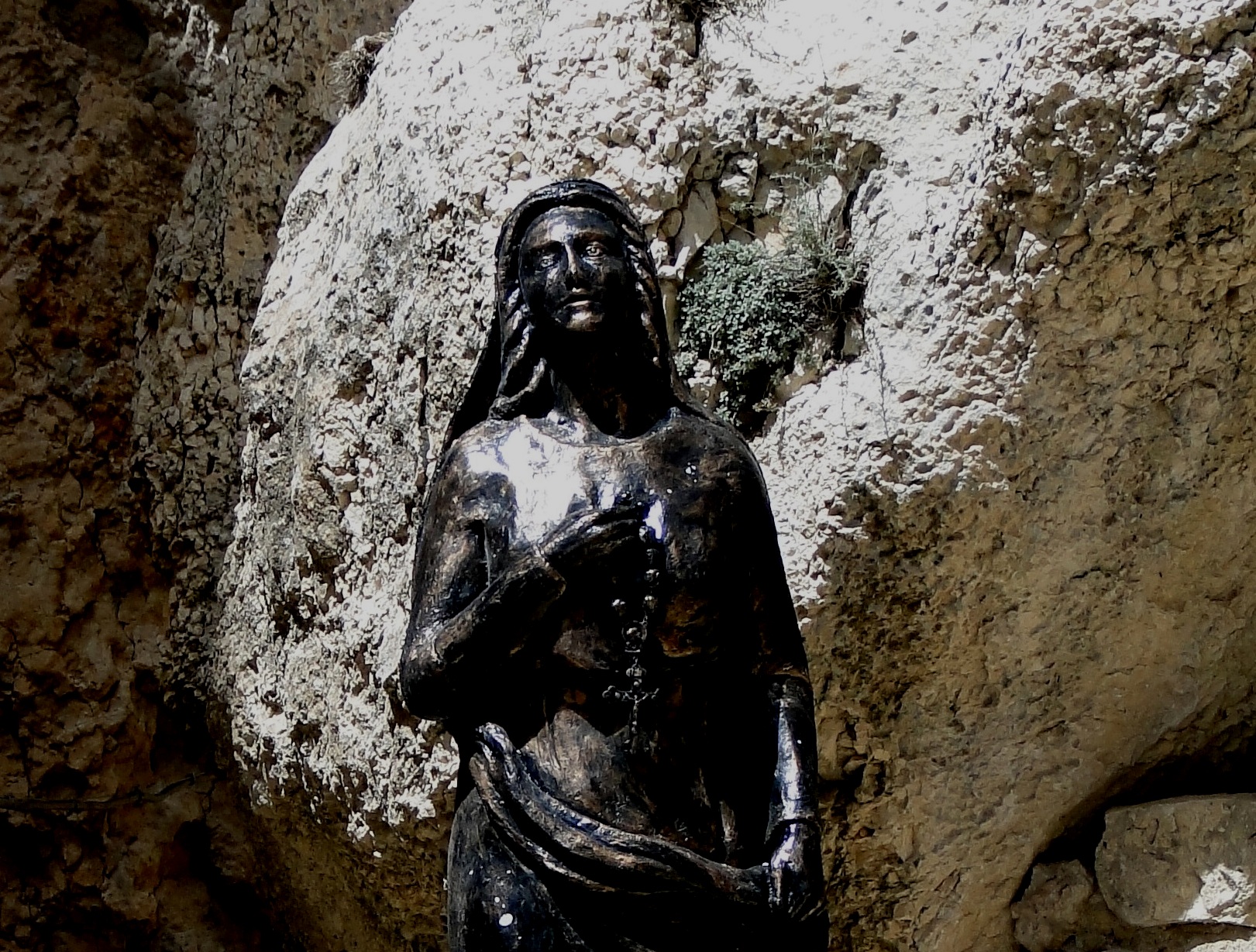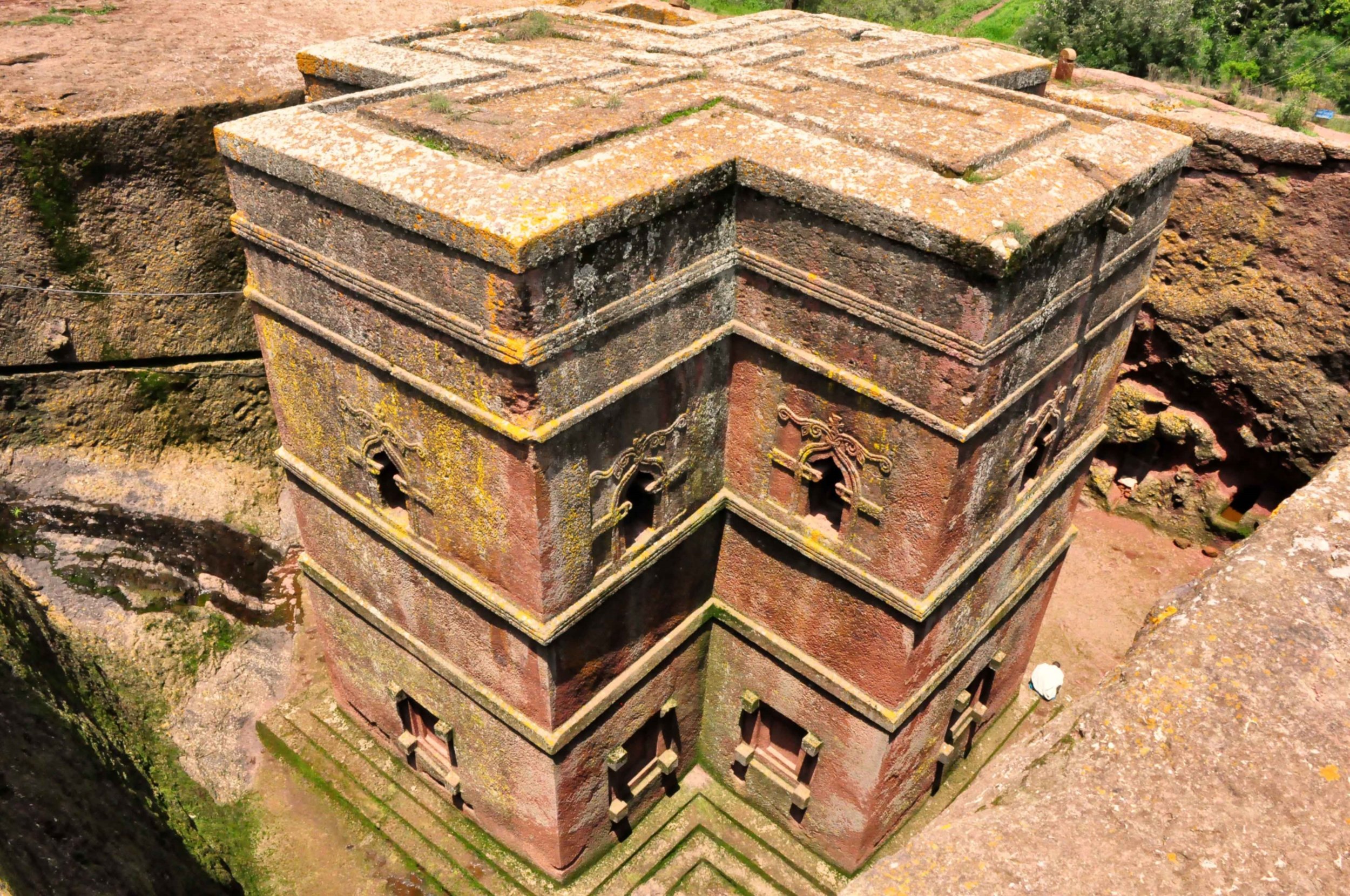The Church of the East
Photograph: A stone from the Yuan dynasty (1271-1368 CE) in the Nanjing Museum with a cross and Syriac inscription containing a verse from the Peshitta, one of the Syriac translations of the Bible. The stone is one of two from a Church of the East site in Fangshan District near Beijing (called Khanbaliq or Dadu in the Yuan dynasty). The verse is the first half of what is now Psalms 34:5 in most bibles. In Syriac it reads "ܚܘܪܘ ܠܘܬܗ ܘܣܒܪܘ ܒܗ" and in the Aramaic Bible, in English it reads "Gaze unto him and hope in him." Photo credit: Trevor Powell | CC4.0, Wikimedia Commons.
Introduction
The selection of perspectives on the Church of the East, sometimes dubbed “the Nestorian Church” after the patriarch of Constantinople and theologian Nestorius, is guided by the attempt to understand the schism that occurred at the Council of Ephesus in 431 AD, as well as its consequences. See also Church and Empire in Asia Pre-1582 for material that focuses on the political attitudes and actions of Christians in pre-1582 Asia.
Resources on the Church of the East
Joseph Tarzi, A Brief History of the Universal Syriac Orthodox Church of Antioch and all the East. Syrian Orthodox Catholicose website.
Sebastian P. Brock, The "Nestorian" Church: A Lamentable Misnomer. Bulletin of the John Rylands Library, 1996. Brock discusses the historical, theological, and linguistic background to the debates around the two natures of Christ.
Wilhelm Baum and Dietmar W. Winkler, The Church of the East: A Concise History. Routledge | Google Books, 2000. Wilhelm Baum and Dietmar W. Winkler, The Church of the East: A Concise History. Routledge | Amazon page, 2003.
Suha Rassam, Christianity in Iraq: Its Origins and Development to the Present Day. Gracewing | Google Books, 2005.
Li Tang, A History of Uighur Religious Conversions: 5th - 16th Centuries. Asia Research Institute Working Paper, Jun 2005. Pdf copy from Library Genesis website.
Li Tang, East Syriac Christianity in Mongol-Yuan China (12th-14th Centuries). Harrassowitz Verlag | Amazon page, Jan 2011. “East Syriac Christianity in Mongol-Yuan China (12th-14 Centuries) offers a comprehensive history of East Syriac (known as "Nestorian") Christianity in China under the Mongol rule. Christianity in its East Syrian form first reached China in A.D. 635 through the missionary efforts of the Church of East in Persia. The religion flourished in China for 210 years until A.D. 845 when a persecution towards all foreign religions was carried out under the reign of Emperor Wuzong (r. 840-846). The comeback of Christianity to China was made possible after the 13th century Mongol conquest of Eurasia and China. East Syriac Christianity spread again widely in Mongol-Yuan China, mainly as a result of the relocation of Turkic-speaking Christians from Central Asia and the Mongolian Steppe such as the Kerait, Ongut, Uighurs, Naimans etc, who had converted to East Syriac Christianity by the 12th century.”
Adam M. Schor, Theodoret's People: Social Networks and Religious Conflict in Late Roman Syria. University of California Press | Amazon page, May 2011. Schor “sheds new light on religious clashes of the mid-fifth century regarding the nature (or natures) of Christ. Adam M. Schor focuses on Theodoret, bishop of Cyrrhus, his Syrian allies, and his opponents, led by Alexandrian bishops Cyril and Dioscorus. Although both sets of clerics adhered to the Nicene creed, their contrasting theological statements led to hostilities, violence, and the permanent fracturing of the Christian community. Schor closely examines council transcripts, correspondence, and other records of communication. Using social network theory, he argues that Theodoret’s doctrinal coalition was actually a meaningful community, bound by symbolic words and traditions, riven with internal rivalries, and embedded in a wider world of elite friendship and patronage.”
Li Tang and Deitmar W. Winkler, From the Oxus River to the Chinese Shores: Studies on East Syriac Christianity in China and Central Asia. LIT Verlag | Amazon page, Feb 2013. “Syriac Christianity spread along the Silk Road together with Aramaic culture and liturgy. Because of this, the staging posts of Christian merchants along the trade routes grew into missionary centers. Thus, the mission of the Church of the East stretched from Persia to Arabia and India, and from the Oxus River to the Chinese shores. This book contains a collection of studies on the Church of the East in its historical setting. It sheds new light on this subject from various perspectives and academic disciplines, providing fresh insights into the rich heritage of Syriac Christianity.”
Thomas Ertl, Repercussions from the Far East: A Comparison of the Catholic and Nestorian Presence in China. Journal of Transcultural Studies, Volume 6, Number 2, 2015.
Dietmar W. Winkler and Li Tang, eds. Hidden Treasures and Intercultural Encounters: Studies on East Syriac Christianity in China and Central Asia. LIT Verlag | Amazon page, Jul 2016. “East Syriac Christianity spread outside the Roman Empire as a result of the missions carried out by the "Church of the East", formerly known as "Nestorian Church". This volume contains the most recent cutting edge research on this very Church in China and Central Asia. World-renowned scholars from universities and institutions in China, India, Europe and North America contributed to the study of this fascinating chapter of the history of Christianity. They come from various disciplines such as Religious and Ecclesiastical History, Philology (Sinology, Syrology), Archeology, Theology, and Central Asiatic Studies.”
Li Tang and Dietmar W. Winkler, Winds of Jingjiao: Studies on Syriac Christianity in China and Central Asia. LIT Verlag | Amazon page, Jul 2016. “As early as AD 781, the writer of the Xi'an Fu inscription described the spread of Syriac Christianity (called Jingjiao in Chinese) to China as a wind blowing eastward. The discovery of the Xi'an Fu Stele, the Dunhuang Jingjiao Manuscripts, the numerous Syriac tombstones and fragments in Central Asia and many parts of China has unearthed a buried history of Syriac Christianity from the Tang Dynasty to the time of the Mongol Empire. The papers in this volume cover a wide range of topics from manuscripts and inscription, to the historical, liturgical and theological perspectives of Syriac Christianity in this geographic realm.”
Steve Cochran, Many Monks Across the Sea: Church of the East Monastic Mission in Ninth Century Asia. Regnum Books International | Amazon page, 2017.
Sebastian Brock, The Syriac Tradition and East-West Christian Ecumenism. Heythrop College, Jul 26, 2018.
Daniel King, editor, The Syriac World. Routledge | Amazon page, Dec 2018. From the second century to today; essays on the religion, culture (material, visual, and literary), history, social structures, and interactions with neighbors.
Voices of the Past, Ancient Chinese Historian Describes the First Christians (635 AD) // The Nestorian Stele. Voices of the Past, Oct 16, 2021.
Philip Jenkins, The Forgotten Christian Queens Who Ruled (Much of) the World. Patheos, Nov 5, 2021. The Christian women of the Church of the East in the Mongol Empire: Queen Sorkaktani, Doquz, and Qutui. Also Maria Palaiologina, the daughter of the Byzantine emperor Michael VIII.
Church Unity: Topics:
This page is part of our section on Church Unity which concerns the Assyrian Church of the East, which separated over the Council of Ephesus in 431, the Oriental Orthodox Churches, which separated over the Council of Chalcedon of 451, the Catholic-Orthodox split of 1054, and the Protestant Churches beginning 1517.

